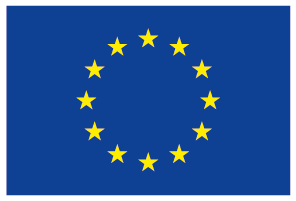BPM Technology
The content of this page widely builds on the findings of the plugIT project that distinguished two different levels of models for Business Processes-related aspects in the area where CloudSocket is located: the business perspective and the system perspective.
Business Perspective #
The business perspective mostly focuses on the business aspects of the process (cf. Terminology page).
BPMN #
BPMN is a standardised flowchart based notation for defining business processes. The notation aims to be comprehensible for managers, business analysts as well as developers. BPMN models may be defined on a variable level of detail: from high-level process landscapes down to a detail level allowing the transformation into an executable language.
Business Process Architecture #
The business process architecture allows to picture business processes as process maps. Furthermore, it is possible to detail processes using activities. It focuses on the Business Architecture level.
Business Process Model #
The business process model is adapted from software development flow diagrams and represents process flows in an organisation. In business process models, the sequence of tasks is modelled with the use of activities that are needed to resolve specific tasks. In addition to flow diagrams that are well-known from conceptual design in programming, control constructs for parallel process execution as well as business-specific attributes (e.g. resources) and references (e.g. to responsible roles or documents) are provided.
Company Map #
Company maps are used to model an overview of Business Process Models or other company maps. Therefore, a company map can be seen as a navigation help and entry point into the hierarchy of Business Process Models.
EPK #
With EPK or EPC (event-driven process chains) processes are modelled.
FAD #
With ARIS FAD the complexity of EPC is reduced. In this model type the assignments of objects (input and output data) to functions is realized.
Function Tree #
The ARIS Function tree is used as a top-level model and shows the functions and their relationships.
IT Projects #
The modelling language project describes the project phases and its work packages.
IT Service Process Architecture #
The IT service process architecture can be used to model a process map for IT service processes. Using the relation data flow, interfaces and the necessary communication between processes are depicted.
SML #
The Service Modeling Language (SML) is used to model complex services and systems, including their structure, constraints, policies, and best practices. SML uses XML Schema and Schematron.
Value-added chain diagram #
With ARIS Value-added chain diagrams processes on a top level are modeled.
System Perspective #
The system perspective mostly focuses on the technical aspects of the process/workflow (cf. Terminology page) and due to the technology-oriented view, there are overlaps with what has been defined on a Technology level for Services.
BPDM - Business process definition metamodel #
The Business Process Definition Metamodel is a framework which supports the representation of business processes independent from notation or methodology. Thus it may support interoperability between different tools and notations. BPDM also provides a formal extension to BPMN, as the BPMN concepts are represented in an explicit metamodel. A focus of BPDM is its clear semantics to be unambiguously interpreted by humans and machines.
BPEL #
The Web Services Business Process Execution Language Version (BPEL) is an XML based language for specifying business process behavior based on Web Services. Business processes can be described in two ways: Executable business processes model actual behavior of a participant in a business interaction. Abstract business processes are partially specified processes taht are not intended to be executed. An Abstract Process may hide some of the required concrete operational details.
IT Service Process #
IT service process allows describing IT service processes in detail. One of the most important modelling element is "Activity", which is an elementary tasks executed by an IT service process.
OWL-S #
The Semantic Markup for Web Services (OWL-S) (formerly DAML-S) builds on the Ontology Web Language (OWL) and is an ontology of services, that makes it possible to enable discover, invoke, compose, and monitor Web resources offering particular services and having particular properties. The ontology consits of the three main parts: the service profile for advertising and discovery services; the process model, which gives a detailed description of a service's operation; and the grouding, which provides details on how to interoperate with a service, via messages.
UML Activity Diagram #
An activity diagram describes workflows and emphasizes the sequence and conditions for coordinating lower-level behaviors.
WS-CDL
The Web Services specification offer a communication bridge between the heterogenous computational environments used to develop and host applications.
WSCL #
The Web Service Choreography Language defines a minimal set of concepts in order to describe Web Service choreographies including message types, protocol and service location.
WSDL #
The Web Services Description Language (WSDL) provides a model and an XML format for describing Web services. WSDL enables one to separate the description of the abstract functionality offered by a service from concrete details of a service description such as "how" and "where" that functionality is offered.
WMSL #
The Web Service Modelling Language is intended to describe semantic web services. There exists a relatively comprehensible syntax as well as XML based syntaxes for exchange and also a mapping to OWL. The language follows the conceptual model of WSMO. WSML is maintained by the ESSI WSML working group and has not yet been accepted from a standardisation body.
XPDL #
The XML Process Definition Language (XPDL) uses an XML-based syntax, specified by an XML Schema, which is used to specify workflow/business process to interchange process definitions between different workflow products, i.e. different modeling tools.


